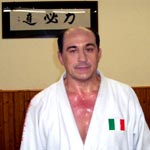Grow in pairs!
The SOTAI RENSHU is training in pairs. Most of judo practice is done with a partner who sometimes lies in the role of TORI (one who performs the action) and sometimes in the role of UKE (the one who receives the action).
The Seiryoku Zen’Yo Kokumin Taiiku No Kata consists of two forms of exercise: the TANDOKU Renshu (exercise alone) and the Sotai Renshu.
The Sotai Renshu of the Seiryoku zen’yo kokumin taiiku no kata shows two fundamental elements of judo practice, the JU SHIKI (the compliance) and KIME SHIKI (extreme decision).
Did you know that this kata shows a summary of all the techniques of the Kodokan Judo method: ATEMI WAZA, NAGE WAZA, KATAME WAZA?
But let’s get back to the Sotai renshu, training in pairs.
Apart from randori, where the exercise is actively performed by two judokas, without there being the roles of tori and uke, have you ever noticed that the workout in pairs is rarely really practiced by both players?
If you reflect on the role of Tori and Uke in all other exercises, uchikomi, yakusoku geiko, butsukari, kakari geiko, kata, most of the time there is Tori, taken from what he is feeling, and a companion who acts as a “tool” in pending his turn.
This is not Sotai renshu!
Sotai renshu is run by two people with different roles who continuously help each other to understand and improve what we are studying.
In alternating phases they will help each other, in the role of Uke, in correcting a movement and better understanding a technique performed by Tori if he is more experienced jodoka, and, also, if necessary, to help and cheer up the other when he is exhausted by fatigue.
All exercises performed in pairs must respect this attitude in the relationship between Tori and Uke.
This is Sotai Renshu! Think of the benefits that you can foster in your students if you explain what is the correct mental attitude of the Sotai Renshu:
• In understanding the principles of judo
• In learning your explanations more quickly
• In developing their education with your teaching
• “I and the others, in harmony, to grow and progress together”
Please understand that all this and much more has to first be learned, and then taught.
This is the DIDACTICS OF JUDO, you can study it in my on-line platform: myjudoisyourjudo.com.
Alfredo Vismara Hanshi Dai Nippon Butokukai

![ALFREDO[1]](https://www.alfredovismarajudo.com/wp-content/uploads/2015/10/ALFREDO1-1.jpg)
